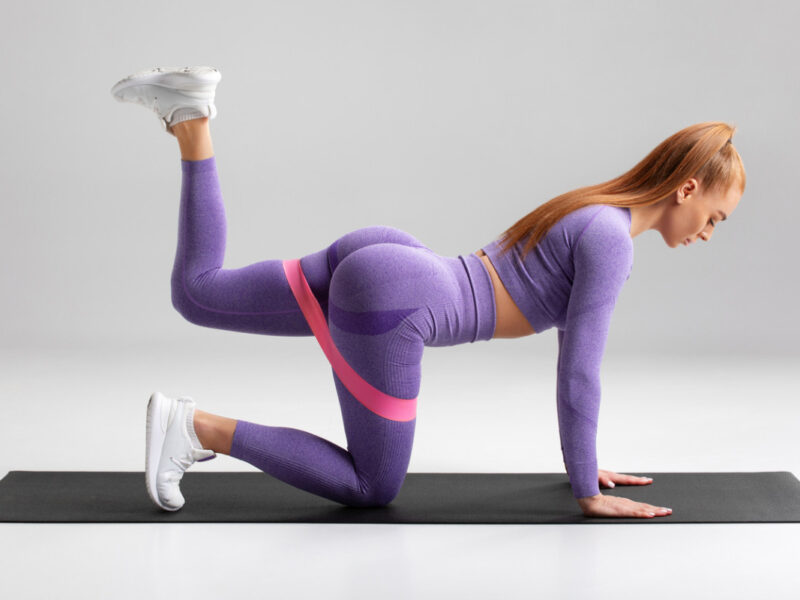Donkey kicks, also known as quadruped bent-knee hip extensions, are a highly effective bodyweight exercise that targets the gluteal muscles, primarily the gluteus maximus. This exercise is great for toning and strengthening the buttocks, improving hip stability, and enhancing overall lower body strength.

How to Perform Donkey Kicks
- Starting Position: Begin on your hands and knees in a tabletop position. Your hands should be directly under your shoulders, and your knees should be aligned with your hips.
- Engage Core: Ensure your spine is in a neutral position, and engage your core muscles by gently pulling your belly button toward your spine. Keep your back flat and your head in a neutral position.
- Donkey Kick: Lift one leg off the ground, bending your knee at a 90-degree angle. Your foot should be flexed, and your sole should face the ceiling.
- Hip Extension: While keeping your knee bent, push your raised leg upward and backward until your thigh is parallel to the ground or slightly higher. Focus on squeezing your glutes at the top of the movement.
- Pause and Squeeze: Hold the extended position for a moment, emphasizing the contraction in your glute muscles.
- Lower Leg: Lower your leg back down to the starting position in a controlled manner, but do not let it touch the ground.
- Repeat: Perform the desired number of repetitions on one leg before switching to the other leg.
Tips for Effective Donkey Kicks
- Maintain a stable tabletop position with your hands and knees firmly planted on the ground.
- Keep your core engaged throughout the exercise to support your lower back and maintain proper form.
- Focus on the quality of the movement rather than speed. Squeeze your glutes at the top of the kick for maximum muscle engagement.
- Avoid arching your lower back or allowing your hips to twist during the movement.
- Perform the exercise with control to avoid unnecessary strain on your joints.
Benefits of Donkey Kicks
- Glute Strengthening: Donkey kicks primarily target the gluteus maximus, helping to strengthen and tone the muscles responsible for hip extension.
- Improved Hip Mobility: Regularly performing donkey kicks can help enhance hip mobility and flexibility, which can be beneficial for various physical activities.
- Core Activation: The exercise engages the core muscles, contributing to improved core stability and support for the lower back.
- Balance and Coordination: Donkey kicks require balance and coordination, making them a valuable addition to functional fitness routines.
- Posture Improvement: Strong glutes contribute to better posture and reduced risk of postural issues.
- Athletic Performance: Strengthening the glutes can enhance athletic performance in activities such as running, jumping, and sprinting.
Variations of Donkey Kicks
- Straight-Leg Donkey Kicks: Perform the exercise with a straight leg instead of bending the knee for a different emphasis on the glute muscles.
- Weighted Donkey Kicks: Hold a dumbbell or ankle weights on the working leg to increase resistance and intensity.
- Fire Hydrants: A similar exercise to donkey kicks, but instead of extending the leg backward, you lift it out to the side (abduction).
Donkey kicks are an effective exercise that can be incorporated into your lower body or glute-focused workout routine. They can help you achieve stronger and more toned glutes while benefiting your overall lower body strength and stability.
Lastly, as with any exercise, proper form and consistency are key to maximizing results and minimizing the risk of injury.










